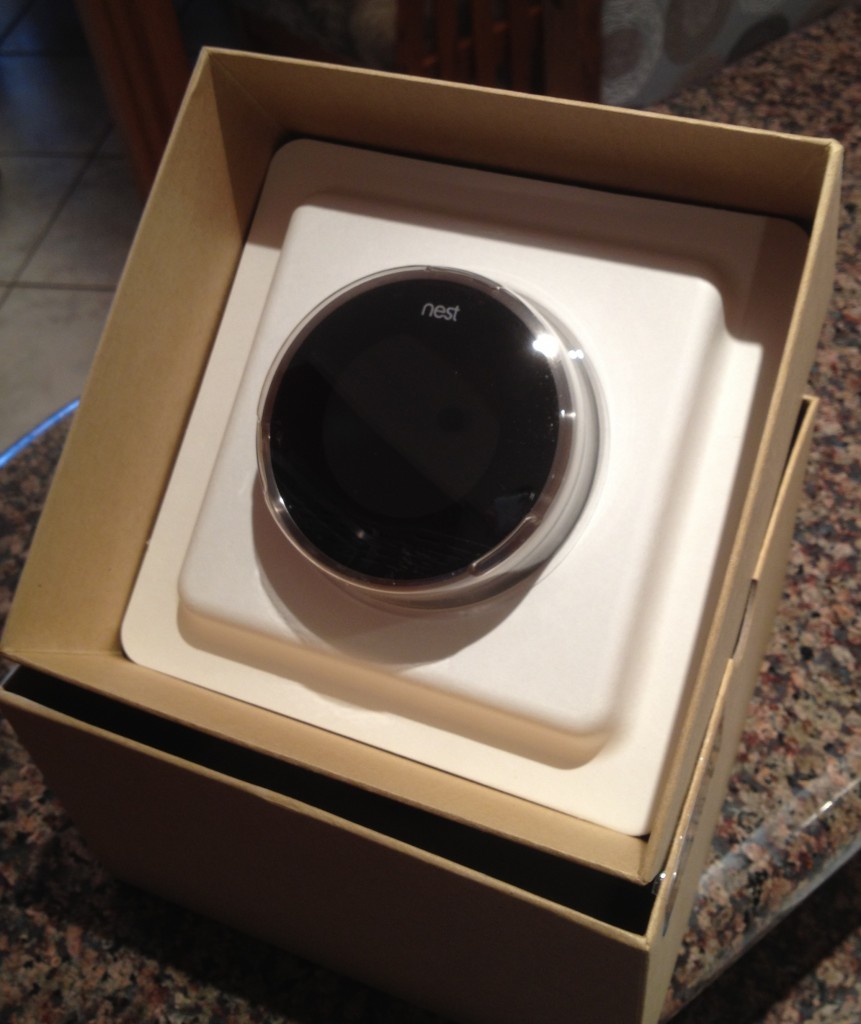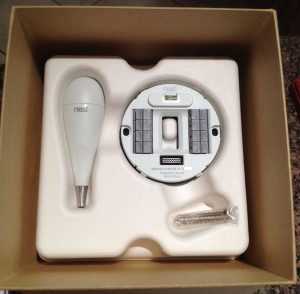Recently I dropped by Lowes and picked up a NEST thermostat … Ok, not the coolest tech item out there, but bear with me.
Designed by former Apple engineers, it exudes of that kind of sleek design and operation. In fact, the CEO ran the teams that created 18 variations of the iPod and the first three generations of iPhones.
The box, when opened, reminds you exactly of opening an iPod or iPhone a few years ago, before Apple got stingy with packaging and extras.
The idea behind this gadget is modernizing the thermostat and giving it a bit of AI to reduce your electricity costs. Simple enough?
But it’s far more than that. In addition to learning your temperature habits and adjusting itself accordingly … it gives you a picture of exactly how you’re using energy and it thinks how to adjust itself to maximize efficiency.
Looking beyond the politically correct little green “energy efficient” leaf inside the blue dial you see in the first picture, is actual energy/cash savings. The NEST can shut off the A/C compressor and just run the fan. It knows that cooling coils may have as much as ten minutes of cooling left in them after the compressor cycle has ended. So by shutting off the compressor prematurely, you don’t have to spend the bucks to power the energy thirsty compressor. It can also be told to figure out if you’re really home or not, and go into an “away mode” after two hours. Additionally the NEST monitors indoor humidity … something virtually unheard of for thermostats.
Install was simple, except for one wire attached to my old thermostat that there was nothing about in the instruction manual, or on the web. A quick phone call to an U.S.-based NEST help desk had the new thermostat installed and working in well under ten minutes. It even included a very slick looking screwdriver for the install. The programming for the wireless security code, date and time took more time than you would expect as there is no keyboard. You have to rotate the dial to access each letter/number. A USB input allowing direct programming via your laptop is how it should have been done. Maybe on future NEST models? This is the only negative associated with it, and it’s not a deal breaker … just out of character for the design, operation and quality that the NEST folks have obviously lavished on their first production model.
And as anything designed by former Apple folks, it must have an app. And since it’s connected to the web via your wireless router, up to ten NESTs can be controlled remotely … should you have two NESTs in the same house, they communicate with each other. And the app can access the energy usage info.
This leads me to ask if it’s worth the $250, and I have to say yes. From looking at the electricity bills for the last two months it appears at this point that it has cut our costs by $50 to $100 per month. But this isn’t the single item that would lead me to recommend it. It’s the fact that after about two weeks, we seldom touch it. The thing just works. The whole house is more temperature stable and clearly more comfortable. Saving bucks is just the icing on this cool “must-have”.
(UPDATE 9/9/12 – I had to have another one … I was enamored with the first one so much)


